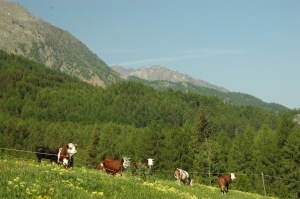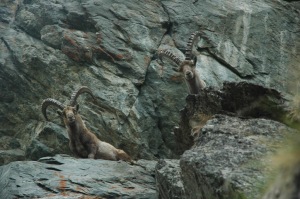The Alpide Belt is a seismogenic zone extending from the Atlas mountains in Morocco through the Zagros mountains of Iran to the easternmost region of Indonesia. This range of mountains was formed through the collision of Africa, Arabia, India, and Australia with Eurasia. Having covered the Indian portion of this collision previously, I now move west to the African/Eurasian collision in the Italian and Suisse Alps.
Similar to the Himalaya, the area around the Alps have been inhabited for millennia. The earliest settlements in the valleys of the Alps date back to as early as
4300 BC and continued throughout the Bronze Age until the rise of the Roman Empire. My journey through the Alps began at the Milano airport and a short train ride to Aosta.
Aosta is a beautiful little hamlet at the foot of the Alps. Settled in the end of the first century BCE by the Salassi tribe. The Salassi tribe was later slaughtered and enslaved by a troop of Roman soldiers in 25 BCE. As early as AD 890 the region around the Aosta Valley was mined for copper sulfides and iron (
ref). Because of its remarkable history the region is pock marked with the scars of industrialization and the remnants of architecture from former times.
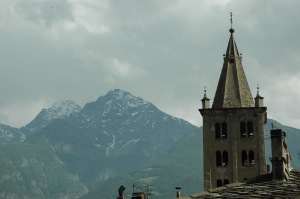 |
| Chapel in Aosta |
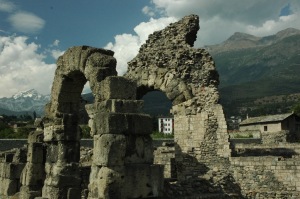 |
| Roman Arches in Aosta |
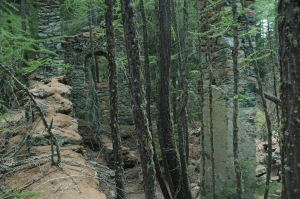 |
| Derelict smelting site |
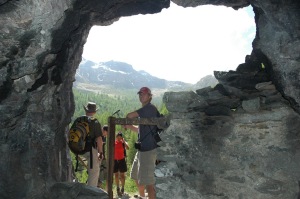 |
Jeremy Gillespie at an abandoned mine
The scenery in the Aosta Valley is something out of Sound of Music. For example:
|
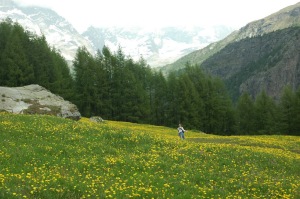 |
| “The hills are alive,” cries Nicole Cox |
Other than spectacular scenery and interesting history, the Aosta Valley provides a geological wonderland. The basal nappe stack of the Aosta Valley is characterized by the Monte Rosa eclogite at the base and the Permian to Jurassic supracrustal rocks at the top with the Zermet-Saas meta-ophiolite sandwiched in the middle. The upper nappe is composed of the blueschist-facies Combin meta-ophiolite underlying the north African passive margin which makes up the uppermost exposure of the Alps.
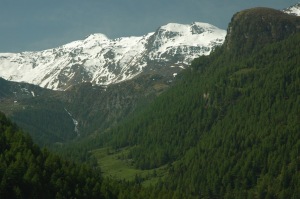 |
| Aosta Valley |
 |
| Nicole Cox gesticulating geology beneath Cervino (Italian-side of Matterhorn) |
Within the upper portion of the Combin nappe is found a large body of (ultra-) high-pressure metasediments. Sample preserving prograde metamorphism consist of garnet, clinopyroxene, glaucophane, lawsonite, and occasionally coesite. The presence of coesite implies these rock underwent metamorphism with pressures greater than 30 kbars (~90 km deep).
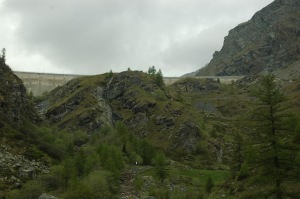 |
| Dam beneath Lake Cignana built into coesite-bearing metasediments |
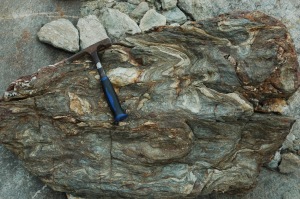 |
| Eclogitic block on the shore of Lake Cignana |
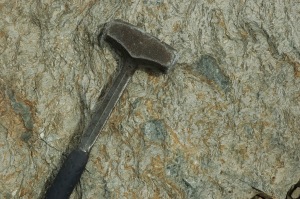 |
| Lawsonite pseudomorphs in serpentinite |
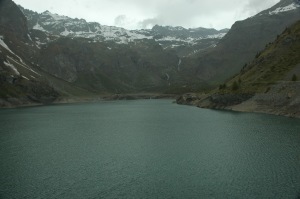 |
| Lake Cignana |
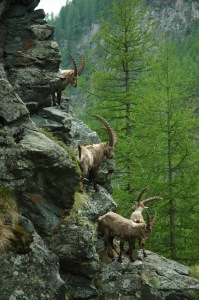 |
| Alpine Ibex |
From the Italian side of the Alps, I crossed over to the Swiss side to see the Gorner Glacier. The Gorner Glacier system is the second largest in the Alps covering 57 square kilometers. This is a relatively small glacier and has been retreating at a
rate of ~15 meters a year for the past 150 years.
 |
| Panorama of Gorner Glacier and Matterhorn (far right). Photo by Adam McKean |
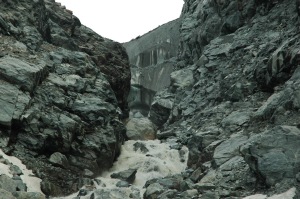 |
| Tongue of Gorner Glacier |
Casualties of the Alps
Next Week: Modern Carbonate Deposition in the Bahamas
 This work is licensed under a Creative Commons Attribution-NonCommercial-ShareAlike 4.0 International License.
This work is licensed under a Creative Commons Attribution-NonCommercial-ShareAlike 4.0 International License.














![]() This work is licensed under a Creative Commons Attribution-NonCommercial-ShareAlike 4.0 International License.
This work is licensed under a Creative Commons Attribution-NonCommercial-ShareAlike 4.0 International License.
